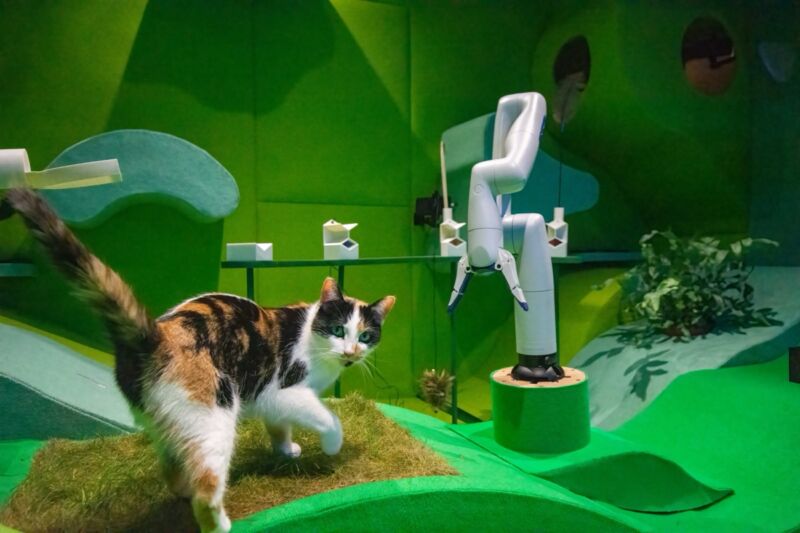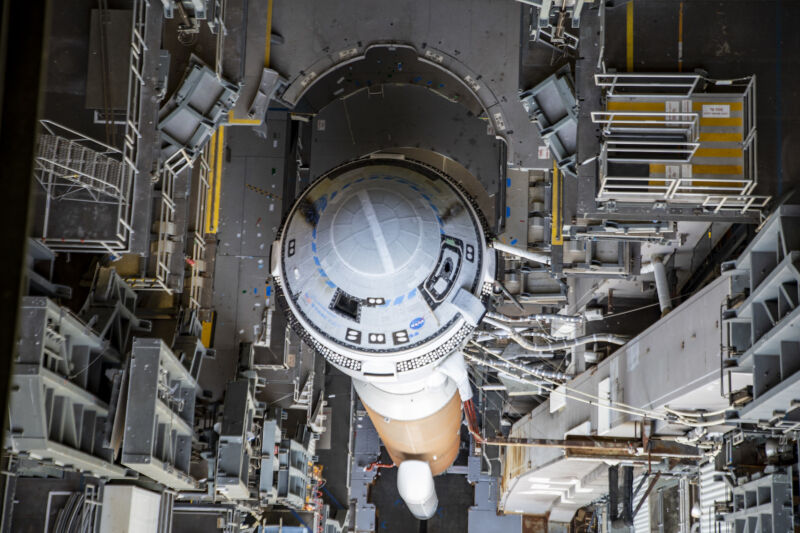Tech News
The nature of consciousness, and how to enjoy it while you can
Science - Posted On:2024-05-18 08:45:01 Source: arstechnica

Unraveling how consciousness arises out of particular configurations of organic matter is a quest that has absorbed scientists and philosophers for ages. Now, with AI systems behaving in strikingly conscious-looking ways, it is more important than ever to get a handle on who and what is capable of experiencing life on a conscious level. As Christof Koch writes in Then I Am Myself the World, "That you are intimately acquainted with the way life feels is a brute fact about the world that cries out for an explanation." His explanation—bounded by the limits of current research and framed through Koch’s preferred theory of consciousness—is what he eloquently attempts to deliver.
Koch, a physicist, neuroscientist, and former president of the Allen Institute for Brain Science, has spent his career hunting for the seat of consciousness, scouring the brain for physical footprints of subjective experience. It turns out that the posterior hot zone, a region in the back of the neocortex, is intricately connected to self-awareness and experiences of sound, sight, and touch. Dense networks of neocortical neurons in this area connect in a looped configuration; output signals feedback into input neurons, allowing the posterior hot zone to influence its own behavior. And herein, Koch claims, lies the key to consciousness.
According to integrated information theory (IIT)—which Koch strongly favors over a multitude of contending theories of consciousness—the Rosetta Stone of subjective experience is the ability of a system to influence itself: to use its past state to affect its present state and its present state to influence its future state.
Proteins In Blood Could Provide Early Cancer Warning 'By More Than Seven Years'
science - Posted On:2024-05-17 23:45:00 Source: slashdot
An anonymous reader quotes a report from The Guardian: Proteins in the blood could warn people of cancer more than seven years before it is diagnosed, according to research [published in the journal Nature Communications]. Scientists at the University of Oxford studied blood samples from more than 44,000 people in the UK Biobank, including over 4,900 people who subsequently had a cancer diagnosis. They compared the proteins of people who did and did not go on to be diagnosed with cancer and identified 618 proteins linked to 19 types of cancer, including colon, lung, non-Hodgkin lymphoma and liver. The study, funded by Cancer Research UK and published in Nature Communications, also found 107 proteins associated with cancers diagnosed more than seven years after the patient's blood sample was collected and 182 proteins that were strongly associated with a cancer diagnosis within three years. The authors concluded that some of these proteins could be used to detect cancer much earlier and potentially provide new treatment options, though further research was needed. Read more of this story at Slashdot.
Cats playing with robots proves a winning combo in novel art installation
Science - Posted On:2024-05-17 17:30:00 Source: arstechnica

Cats and robots are a winning combination, as evidenced by all those videos of kitties riding on Roombas. And now we have Cat Royale, a "multispecies" live installation in which three cats regularly "played" with a robot over 12 days, carefully monitored by human operators. Created by computer scientists from the University of Nottingham in collaboration with artists from a group called Blast Theory, the installation debuted at the World Science Festival in Brisbane, Australia, last year and is now a touring exhibit. The accompanying YouTube video series recently won a Webby Award, and a paper outlining the insights gleaned from the experience was similarly voted best paper at the recent Computer-Human Conference (CHI’24).
"At first glance, the project is about designing a robot to enrich the lives of a family of cats by playing with them," said co-author Steve Benford of the University of Nottingham, who led the research, "Under the surface, however, it explores the question of what it takes to trust a robot to look after our loved ones and potentially ourselves." While cats might love Roombas, not all animal encounters with robots are positive: Guide dogs for the visually impaired can get confused by delivery robots, for example, while the rise of lawn mowing robots can have a negative impact on hedgehogs, per Benford et al.
Blast Theory and the scientists first held a series of exploratory workshops to ensure the installation and robotic design would take into account the welfare of the cats. "Creating a multispecies system—where cats, robots, and humans are all accounted for—takes more than just designing the robot," said co-author Eike Schneiders of Nottingham's Mixed Reality Lab about the primary takeaway from the project. "We had to ensure animal well-being at all times, while simultaneously ensuring that the interactive installation engaged the (human) audiences around the world. This involved consideration of many elements, including the design of the enclosure, the robot, and its underlying systems, the various roles of the humans-in-the-loop, and, of course, the selection of the cats.”
Using vague language about scientific facts misleads readers
Science - Posted On:2024-05-17 15:30:01 Source: arstechnica

Anyone can do a simple experiment. Navigate to a search engine that offers suggested completions for what you type, and start typing "scientists believe." When I did it, I got suggestions about the origin of whales, the evolution of animals, the root cause of narcolepsy, and more. The search results contained a long list of topics, like "How scientists believe the loss of Arctic sea ice will impact US weather patterns" or "Scientists believe Moon is 40 million years older than first thought."
What do these all have in common? They're misleading, at least in terms of how most people understand the word "believe." In all these examples, scientists have become convinced via compelling evidence; these are more than just hunches or emotional compulsions. Given that difference, using "believe" isn't really an accurate description. Yet all these examples come from searching Google News, and so are likely to come from journalistic outlets that care about accuracy.
Does the difference matter? A recent study suggests that it does. People who were shown headlines that used subjective verbs like "believe" tended to view the issue being described as a matter of opinion—even if that issue was solidly grounded in fact.
Hopes For Sustainable Jet Fuel Not Realistic, Report Finds
science - Posted On:2024-05-17 10:45:00 Source: slashdot
Hopes that replacement fuels for airplanes will slash carbon pollution are misguided and support for these alternatives could even worsen the climate crisis, a new report has warned. The Guardian: There is currently "no realistic or scalable alternative" to standard kerosene-based jet fuels, and touted "sustainable aviation fuels" are well off track to replace them in a timeframe needed to avert dangerous climate change, despite public subsidies, the report by the Institute for Policy Studies, a progressive thinktank, found. "While there are kernels of possibility, we should bring a high level of skepticism to the claims that alternative fuels will be a timely substitute for kerosene-based jet fuels," the report said. Chuck Collins, co-author of the report, said: "To bring these fuels to the scale needed would require massive subsidies, the trade-offs would be unacceptable and would take resources aware from more urgent decarbonization priorities. It's a huge greenwashing exercise by the aviation industry. It's magical thinking that they will be able to do this." In the US, Joe Biden's administration has set a goal for 3bn gallons of sustainable aviation fuel, which is made from non-petroleum sources such as food waste, woody biomass and other feedstocks, to be produced by 2030, which it said will cut aviation's planet-heating emissions by 20%. Read more of this story at Slashdot.
Rocket Report: Starship stacked; Georgia shuts the door on Spaceport Camden
Science - Posted On:2024-05-17 07:45:00 Source: arstechnica

Welcome to Edition 6.44 of the Rocket Report! Kathy Lueders, general manager of SpaceX's Starbase launch facility, says the company expects to receive an FAA launch license for the next Starship test flight shortly after Memorial Day. It looks like this rocket could fly in late May or early June, about two-and-a-half months after the previous Starship test flight. This is an improvement over the previous intervals of seven months and four months between Starship flights.
As always, we welcome reader submissions, and if you don't want to miss an issue, please subscribe using the box below (the form will not appear on AMP-enabled versions of the site). Each report will include information on small-, medium-, and heavy-lift rockets as well as a quick look ahead at the next three launches on the calendar.
Blue Origin launch on tap this weekend. Blue Origin plans to launch its first human spaceflight mission in nearly two years on Sunday. This flight will launch six passengers on a flight to suborbital space more than 60 miles (100 km) over West Texas. Blue Origin, Jeff Bezos's space company, has not flown people to space since a New Shepard rocket failure on an uncrewed research flight in September 2022. The company successfully launched New Shepard on another uncrewed suborbital mission in December.
Europe is uncertain whether its ambitious Mercury probe can reach the planet
Science - Posted On:2024-05-16 17:15:00 Source: arstechnica

This week the European Space Agency posted a slightly ominous note regarding its BepiColombo spacecraft, which consists of two orbiters bound for Mercury.
The online news release cited a "glitch" with the spacecraft that is impairing its ability to generate thrust. The problem was first noted on April 26, when the spacecraft's primary propulsion system was scheduled to undertake an orbital maneuver. Not enough electrical power was delivered to the solar-electric propulsion system at the time.
According to the space agency, a team involving its own engineers and those of its industrial partners began working on the issue. By May 7 they had made some progress, restoring the spacecraft's thrust to about 90 percent of its original level. But this is not full thrust, and the root cause of the problem is still poorly understood.
It could soon be illegal to publicly wear a mask for health reasons in NC
Science - Posted On:2024-05-16 16:15:00 Source: arstechnica

The North Carolina State Senate on Wednesday voted 30-15, along party lines, in favor of a Republican bill that would make it illegal for people in the state to wear a mask in public for health reasons. The bill is now moving to the House, where it could potentially see changes.
The proposed ban on health-based masking is part of a larger bill otherwise aimed at increasing penalties for people wearing masks to conceal their identity while committing a crime or impeding traffic. The bill was largely spurred by recent protests on university and college campuses across the country, including North Carolina-based schools, against the war in Gaza. In recent months, there have been demonstrations in Raleigh and Durham that have blocked roadways, as well as clashes on the nearby campus of University of North Carolina at Chapel Hill. Some demonstrators were seen wearing masks in those events.
But the bill, House Bill 237, goes a step further by making it illegal to wear a mask in public for health and safety reasons, either to protect the wearer, those around them, or both. Specifically, the bill repeals a 2020 legal exemption, enacted amid the COVID-19 pandemic, which allowed for public health-based masking for the first time in decades.
How do you pronounce “hockey”? US players say it with “fake Canadian” accent.
Science - Posted On:2024-05-16 13:45:00 Source: arstechnica

University of Rochester linguist Andrew Bray started out studying the evolution of the trademark sports jargon used in hockey for his master's thesis. For instance, a hockey arena is a "barn," while the puck is a "biscuit." When he would tell people about the project, however, they kept asking if he was trying to determine why American hockey players sound like "fake Canadians." Intrigued, Bray decided to shift his research focus to find out if hockey players did indeed have distinctively Canadian speech patterns and, if so, why this might be the case.
He discovered that US hockey players borrow certain aspects of the Canadian English accent, particularly when it comes to hockey jargon. But they don't follow the typical rules of pronunciation. In short, "American hockey players are not trying to shift their speech to sound more Canadian," Bray said during a press briefing. "They're trying to sound more like a hockey player. That's why it's most evident in hockey-specific terms."
It's a concept known as a "linguistic persona," a means of communicating how one identifies—in this case, as a hockey player— through speech. Bray gave a talk about his research today at a meeting of the Acoustical Society of America in Ottawa, Canada, held in conjunction with the Canadian Acoustical Association.
Mixup of drinking and irrigation water sparks dangerous outbreak in children
Science - Posted On:2024-05-16 10:45:00 Source: arstechnica

In 1989, a city in Utah upgraded its drinking water system, putting in a whole new system and repurposing the old one to supply cheap untreated water for irrigating lawns and putting out fires. That meant that the treated water suitable for drinking flowed from new spigots, while untreated water gushed from the old ones. Decades went by with no apparent confusion; residents seemed clear on the two different water sources. But, according to an investigation report published recently by state and county health officials, that local knowledge got diluted as new residents moved into the area. And last summer, the confusion over the conduits led to an outbreak of life-threatening illnesses among young children.
In July and August of 2023, state and local health officials identified 13 children infected with Shiga toxin–producing Escherichia coli (STEC) O157:H7. The children ranged in age from 1 to 15, with a median age of 4. Children are generally at high risk of severe infections with this pathogen, along with older people and those with compromised immune systems. Of the 13 infected children, seven were hospitalized and two developed hemolytic uremic syndrome, a life-threatening complication that can lead to kidney failure.
Preliminary genetic analyses of STEC O157:H7 from two of the children suggested that the children's infections were linked to a common source. So, health officials quickly developed a questionnaire to narrow down the potential source. It soon became clear that the irrigation water—aka untreated, pressurized, municipal irrigation water (UPMIW)—was a commonality among the children. Twelve of 13 infected children reported exposure to it in some form: Two said they drank it; five played with UPMIW hoses; three used the water for inflatable water toys; two used it for a water table; and one ran through sprinklers. None reported eating fruits or vegetables from home (noncommercial) gardens irrigated with the UPMIW.
Daily Telescope: I spy, with my little eye, the ISS
Science - Posted On:2024-05-16 08:45:01 Source: arstechnica

Welcome to the Daily Telescope. There is a little too much darkness in this world and not enough light, a little too much pseudoscience and not enough science. We'll let other publications offer you a daily horoscope. At Ars Technica, we're going to take a different route, finding inspiration from very real images of a universe that is filled with stars and wonder.
Good morning. It's May 16, and today's image comes from an on-demand satellite imagery company named HEO. Only this image is not of the Earth, but rather the International Space Station.
According to the company, which is headquartered in Australia, one of its cameras imaged the space station at a distance of 69.06 km away, over the Indian Ocean. HEO flies its sensors as hosted payloads on satellites in Earth orbit. However, HEO's focus is not on Earth; it's on other spacecraft in low-Earth orbit to assess their status and identify anomalous behavior.
Flood of Fake Science Forces Multiple Journal Closures
science - Posted On:2024-05-15 11:00:00 Source: slashdot
schwit1 shares a report: Fake studies have flooded the publishers of top scientific journals, leading to thousands of retractions and millions of dollars in lost revenue. The biggest hit has come to Wiley, a 217-year-old publisher based in Hoboken, N.J., which Tuesday announced that it was closing 19 journals, some of which were infected by large-scale research fraud. In the past two years, Wiley has retracted more than 11,300 papers that appeared compromised, according to a spokesperson, and closed four journals. It isn't alone: At least two other publishers have retracted hundreds of suspect papers each. Several others have pulled smaller clusters of bad papers. Although this large-scale fraud represents a small percentage of submissions to journals, it threatens the legitimacy of the nearly $30 billion academic publishing industry and the credibility of science as a whole. The discovery of nearly 900 fraudulent papers in 2022 at IOP Publishing, a physical sciences publisher, was a turning point for the nonprofit. "That really crystallized for us, everybody internally, everybody involved with the business," said Kim Eggleton, head of peer review and research integrity at the publisher. "This is a real threat." The sources of the fake science are "paper mills" -- businesses or individuals that, for a price, will list a scientist as an author of a wholly or partially fabricated paper. The mill then submits the work, generally avoiding the most prestigious journals in favor of publications such as one-off special editions that might not undergo as thorough a review and where they have a better chance of getting bogus work published. Read more of this story at Slashdot.
Revolutionary Genetics Research Shows RNA May Rule Our Genome
science - Posted On:2024-05-15 03:15:00 Source: slashdot
Philip Ball reports via Scientific American: Thomas Gingeras did not intend to upend basic ideas about how the human body works. In 2012 the geneticist, now at Cold Spring Harbor Laboratory in New York State, was one of a few hundred colleagues who were simply trying to put together a compendium of human DNA functions. Their �project was called ENCODE, for the Encyclopedia of DNA Elements. About a decade earlier almost all of the three billion DNA building blocks that make up the human genome had been identified. Gingeras and the other ENCODE scientists were trying to figure out what all that DNA did. The assumption made by most biologists at that time was that most of it didn't do much. The early genome mappers estimated that perhaps 1 to 2 percent of our DNA consisted of genes as classically defined: stretches of the genome that coded for proteins, the workhorses of the human body that carry oxygen to different organs, build heart muscles and brain cells, and do just about everything else people need to stay alive. Making proteins was thought to be the genome's primary job. Genes do this by putting manufacturing instructions into messenger molecules called mRNAs, which in turn travel to a cell's protein-making machinery. As for the rest of the genome's DNA? The "protein-coding regions," Gingeras says, were supposedly "surrounded by oceans of biologically functionless sequences." In other words, it was mostly junk DNA. So it came as rather a shock when, in several 2012 papers in Nature, he and the rest of the ENCODE team reported that at one time or another, at least 75 percent of the genome gets transcribed into RNAs. The ENCODE work, using techniques that could map RNA activity happening along genome sections, had begun in 2003 and came up with preliminary results in 2007. But not until five years later did the extent of all this transcription become clear. If only 1 to 2 percent of this RNA was encoding proteins, what was the rest for? Some of it, scientists knew, carried out crucial tasks such as turning genes on or off; a lot of the other functions had yet to be pinned down. Still, no one had imagined that three quarters of our DNA turns into RNA, let alone that so much of it could do anything useful. Some biologists greeted this announcement with skepticism bordering on outrage. The ENCODE team was accused of hyping its findings; some critics argued that most of this RNA was made accidentally because the RNA-making enzyme that travels along the genome is rather indiscriminate about which bits of DNA it reads. Now it looks like ENCODE was basically right. Dozens of other research groups, scoping out activity along the human genome, also have found that much of our DNA is churning out "noncoding" RNA. It doesn't encode proteins, as mRNA does, but engages with other molecules to conduct some biochemical task. By 2020 the ENCODE project said it had identified around 37,600 noncoding genes -- that is, DNA stretches with instructions for RNA molecules that do not code for proteins. That is almost twice as many as there are protein-coding genes. Other tallies vary widely, from around 18,000 to close to 96,000. There are still doubters, but there are also enthusiastic biologists such as Jeanne Lawrence and Lisa Hall of the University of Massachusetts Chan Medical School. In a 2024 commentary for the journal Science, the duo described these findings as part of an "RNA revolution." What makes these discoveries revolutionary is what all this noncoding RNA -- abbreviated as ncRNA -- does. Much of it indeed seems involved in gene regulation: not simply turning them off or on but also fine-tuning their activity. So although some genes hold the blueprint for proteins, ncRNA can control the activity of those genes and thus ultimately determine whether their proteins are made. This is a far cry from the basic narrative of biology that has held sway since the discovery of the DNA double helix some 70 years ago, which was all about DNA leading to proteins. "It appears that we may have fundamentally misunderstood the nature of genetic programming," wrote molecular biologists Kevin Morris of Queensland University of Technology and John Mattick of the University of New South Wales in Australia in a 2014 article. Another important discovery is that some ncRNAs appear to play a role in disease, for example, by regulating the cell processes involved in some forms of cancer. So researchers are investigating whether it is possible to develop drugs that target such ncRNAs or, conversely, to use ncRNAs themselves as drugs. If a gene codes for a protein that helps a cancer cell grow, for example, an ncRNA that shuts down the gene might help treat the cancer. Read more of this story at Slashdot.
Boeing is troubleshooting a small helium leak on the Starliner spacecraft
Science - Posted On:2024-05-14 17:00:00 Source: arstechnica

Boeing is taking a few extra days to resolve a small helium leak on the Starliner spacecraft slated to ferry two NASA astronauts on a test flight to the International Space Station, officials said Tuesday.
This means the first crew launch of Boeing's Starliner spacecraft, running years behind schedule and more than $1.4 billion over budget, won't happen before next Tuesday, May 21, at 4:43 pm EDT (20:43 UTC). Meeting this schedule assumes engineers can get comfortable with the helium leak. Officials from Boeing and NASA, which manages Boeing's multibillion-dollar Starliner commercial crew contract, previously targeted Friday, May 17, for the spacecraft's first launch with astronauts onboard.
Boeing's ground team traced the leak to a flange on a single reaction control system thruster on the spacecraft's service module.
2023 temperatures were warmest we’ve seen for at least 2,000 years
Science - Posted On:2024-05-14 17:00:00 Source: arstechnica

Starting in June of last year, global temperatures went from very hot to extreme. Every single month since June, the globe has experienced the hottest temperatures for that month on record—that's 11 months in a row now, enough to ensure that 2023 was the hottest year on record, and 2024 will likely be similarly extreme.
There's been nothing like this in the temperature record, and it acts as an unmistakable indication of human-driven warming. But how unusual is that warming compared to what nature has thrown at us in the past? While it's not possible to provide a comprehensive answer to that question, three European researchers (Jan Esper, Max Torbenson, and Ulf Büntgen) have provided a partial answer: the Northern Hemisphere hasn't seen anything like this in over 2,000 years.
Current temperature records are based on a global network of data-gathering hardware. But, as you move back in time, gaps in that network go from rare to ever more common. Moving backwards from 1900, the network shrinks to just a few dozen land-based thermometers, almost all of them in Europe.
Air Force is “growing concerned” about the pace of Vulcan rocket launches
Science - Posted On:2024-05-13 19:15:00 Source: arstechnica

It has been nearly four years since the US Air Force made its selections for companies to launch military payloads during the mid-2020s. The military chose United Launch Alliance, and its Vulcan rocket, to launch 60 percent of these missions; and it chose SpaceX, with the Falcon 9 and Falcon Heavy boosters, to launch 40 percent.
Although the large Vulcan rocket was still in development at the time, it was expected to take flight within the next year or so. Upon making the award, an Air Force official said the military believed Vulcan would soon be ready to take flight. United Launch Alliance was developing the Vulcan rocket in order to no longer be reliant on RD-180 engines that are built in Russia and used by its Atlas V rocket.
"I am very confident with the selection that we have made today," William Roper, assistant secretary of the Air Force for acquisition, technology, and logistics, said at the time. "We have a very low-risk path to get off the RD-180 engines."
First Person To Receive a Genetically Modified Pig Kidney Transplant Dies
science - Posted On:2024-05-13 16:45:00 Source: slashdot
An anonymous reader quotes a report from CBS News: Richard "Rick" Slayman, the first human to receive a genetically modified pig kidney transplant, has died almost two months after the procedure. Slayman, who had end-stage kidney disease, underwent the transplant in March at Massachusetts General Hospital in Boston at age 62. The hospital said in a statement on Saturday that there was "no indication" that his death was the result of the transplant. The transplant surgeon had said he hoped the transplant would function for at least two years. "The Mass General transplant team is deeply saddened at the sudden passing of Mr. Rick Slayman," read the hospital statement. "Mr. Slayman will forever be seen as a beacon of hope to countless transplant patients worldwide and we are deeply grateful for his trust and willingness to advance the field of xenotransplantation." The surgery was a milestone for the field of xenotransplantation -- the transplant of organs from one species to another -- as a way to alleviate the organ shortage for people who need transplants. The effort to genetically modify animal organs is in hopes that the human body will not reject the foreign tissue. NPR notes that there are more than 100,000 people in the U.S. on the waitlist for organs. Read more of this story at Slashdot.
Beethoven likely didn’t die from lead poisoning, new DNA analysis reveals
Science - Posted On:2024-05-13 13:00:00 Source: arstechnica

Last year, researchers sequenced the genome of famed composer Ludwig van Beethoven for the first time, based on authenticated locks of hair. The same team has now analyzed two of the locks for toxic substances and found extremely high levels of lead, as well as arsenic and mercury, according to a recent letter published in the journal Clinical Chemistry.
“It definitely shows Beethoven was exposed to high concentrations of lead,” Paul Janetto, co-author and director of the Mayo Clinic's Department of Laboratory Medicine and Pathology, told The New York Times. “These are the highest values in hair I’ve ever seen. We get samples from around the world, and these values are an order of magnitude higher.” That said, the authors concluded that the lead exposure was not sufficient to actually kill the composer, although Beethoven very likely did suffer adverse health effects because of it.
As previously reported, Beethoven was plagued throughout his life by myriad health problems. The composer began losing his hearing in his mid- to late 20s, experiencing tinnitus and the loss of high-tone frequencies in particular. He claimed the onset began with a fit in 1798 induced by a quarrel with a singer. By his mid-40s, he was functionally deaf and unable to perform public concerts, although he could still compose music.
NOAA says “extreme” solar storm will persist through the weekend
Science - Posted On:2024-05-13 09:00:01 Source: arstechnica

After a night of stunning auroras across much of the United States and Europe on Friday, a severe geomagnetic storm is likely to continue through at least Sunday, forecasters said.
The Space Weather Prediction Center at the US-based National Oceanic and Atmospheric Prediction Center observed that 'Extreme' G5 conditions were ongoing as of Saturday morning due to heightened Solar activity.
"The threat of additional strong flares and CMEs (coronal mass ejections) will remain until the large and magnetically complex sunspot cluster rotates out of view over the next several days," the agency posted in an update on the social media site X on Saturday morning.
Webb Telescope Finds a (Hot) Earth-Sized Planet With an Atmosphere
science - Posted On:2024-05-12 15:45:00 Source: slashdot
An anonymous reader shared this report from the Associated Press: A thick atmosphere has been detected around a planet that's twice as big as Earth in a nearby solar system, researchers reported Wednesday. The so-called super Earth — known as 55 Cancri e — is among the few rocky planets outside our solar system with a significant atmosphere, wrapped in a blanket of carbon dioxide and carbon monoxide. The exact amounts are unclear. Earth's atmosphere is a blend of nitrogen, oxygen, argon and other gases. "It's probably the firmest evidence yet that this planet has an atmosphere," said Ian Crossfield, an astronomer at the University of Kansas who studies exoplanets and was not involved with the research. The research was published in the journal Nature. "The boiling temperatures on this planet — which can reach as hot as 4,200 degrees Fahrenheit (2,300 degrees Celsius) — mean that it is unlikely to host life," the article points out. "Instead, scientists say the discovery is a promising sign that other such rocky planets with thick atmospheres could exist that may be more hospitable." Read more of this story at Slashdot.